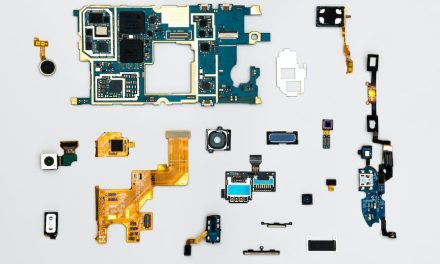Table of Contents
Igniting curiosity, empowering minds.
Introduction
In recent years, there has been a noticeable shift towards inquiry-based learning in education. This approach focuses on fostering natural curiosity and encouraging students to actively explore and investigate topics of interest. By placing the emphasis on asking questions, seeking answers, and engaging in hands-on experiences, inquiry-based learning aims to develop critical thinking skills, problem-solving abilities, and a lifelong love for learning. This introduction will delve into the concept of inquiry-based learning and highlight its benefits in promoting a more student-centered and engaging educational experience.
The Benefits of Inquiry-Based Learning in the Classroom
The Benefits of Inquiry-Based Learning in the Classroom
Inquiry-based learning is a teaching approach that focuses on fostering natural curiosity and promoting active engagement in the learning process. This method encourages students to ask questions, investigate, and explore topics of interest, rather than simply memorizing facts and information. By shifting the focus from teacher-centered instruction to student-centered exploration, inquiry-based learning has been shown to have numerous benefits in the classroom.
One of the key advantages of inquiry-based learning is that it promotes critical thinking skills. When students are encouraged to ask questions and seek answers on their own, they develop the ability to analyze information, evaluate evidence, and make informed decisions. This not only helps them in their academic pursuits but also prepares them for real-world situations where critical thinking is essential.
Furthermore, inquiry-based learning enhances problem-solving skills. By engaging in hands-on activities and conducting their own investigations, students learn how to identify problems, develop hypotheses, and test their ideas. This process of trial and error allows them to develop resilience and perseverance, as they learn that failure is an opportunity for growth and improvement. These problem-solving skills are invaluable in all areas of life, from the classroom to the workplace.
Inquiry-based learning also promotes a deeper understanding of concepts. When students are actively involved in the learning process, they are more likely to make connections between new information and their prior knowledge. This helps them to construct meaning and develop a solid foundation of understanding. Additionally, by exploring topics of interest, students are more motivated to learn and are more likely to retain the information they have discovered.
Another benefit of inquiry-based learning is that it fosters creativity and innovation. By encouraging students to think outside the box and explore different perspectives, this approach stimulates their imagination and allows them to come up with unique solutions to problems. This creativity is not only valuable in the arts but also in fields such as science, technology, engineering, and mathematics, where innovation is crucial.
Moreover, inquiry-based learning promotes collaboration and communication skills. When students work together on projects and investigations, they learn how to effectively communicate their ideas, listen to others, and work as a team. These skills are essential in today’s interconnected world, where collaboration and effective communication are highly valued.
Lastly, inquiry-based learning promotes a love for learning. By allowing students to pursue their own interests and passions, this approach instills a sense of ownership and autonomy in their education. When students are actively engaged and invested in their learning, they are more likely to develop a lifelong love for learning and continue to seek knowledge beyond the classroom.
In conclusion, inquiry-based learning offers numerous benefits in the classroom. From promoting critical thinking and problem-solving skills to fostering creativity and collaboration, this approach empowers students to take ownership of their education and become lifelong learners. By shifting the focus from teacher-centered instruction to student-centered exploration, inquiry-based learning taps into students’ natural curiosity and creates a dynamic and engaging learning environment. As educators continue to recognize the value of inquiry-based learning, it is likely to become an increasingly prevalent and effective teaching method in classrooms around the world.
Implementing Inquiry-Based Learning: Strategies and Best Practices
The Shift Towards Inquiry-Based Learning: Fostering Natural Curiosity
Implementing Inquiry-Based Learning: Strategies and Best Practices
In recent years, there has been a noticeable shift in education towards inquiry-based learning. This approach to teaching and learning focuses on fostering natural curiosity and encouraging students to ask questions, investigate, and explore topics of interest. By engaging students in the process of inquiry, educators are able to create a more student-centered and interactive learning environment.
One of the key strategies for implementing inquiry-based learning is to provide students with open-ended questions or problems to solve. These questions should be thought-provoking and encourage students to think critically and creatively. By presenting students with real-world problems or scenarios, educators can help them develop problem-solving skills and apply their knowledge in meaningful ways.
Another important aspect of inquiry-based learning is the role of the teacher. In this approach, the teacher becomes a facilitator of learning rather than a dispenser of knowledge. The teacher guides students through the process of inquiry, providing support and resources as needed. By taking on this role, educators can empower students to take ownership of their learning and develop important skills such as self-direction and collaboration.
Inquiry-based learning also emphasizes the importance of student engagement and active participation. Rather than passively receiving information, students are actively involved in the learning process. They are encouraged to ask questions, conduct research, and share their findings with others. This active engagement not only enhances students’ understanding of the subject matter but also promotes critical thinking and problem-solving skills.
To effectively implement inquiry-based learning, educators should also provide students with opportunities for reflection and metacognition. By reflecting on their learning experiences, students can gain a deeper understanding of their own thinking processes and learning strategies. This reflection can help them identify areas for improvement and develop a growth mindset.
Inquiry-based learning also benefits from the integration of technology. Technology can provide students with access to a wealth of information and resources, allowing them to explore topics in greater depth. It can also facilitate collaboration and communication among students, enabling them to work together on projects and share their findings with a wider audience.
In order to ensure the success of inquiry-based learning, it is important for educators to create a supportive and inclusive learning environment. This includes providing students with the necessary resources and materials, as well as fostering a sense of community and collaboration. By creating a safe and welcoming space for inquiry, educators can encourage students to take risks, ask questions, and explore new ideas.
In conclusion, inquiry-based learning is a powerful approach to education that fosters natural curiosity and encourages students to become active participants in their own learning. By implementing strategies such as providing open-ended questions, taking on the role of facilitator, promoting student engagement, and integrating technology, educators can create a dynamic and interactive learning environment. By embracing inquiry-based learning, educators can empower students to develop important skills such as critical thinking, problem-solving, and self-direction.
Promoting Natural Curiosity: Creating an Inquiry-Friendly Environment
The Shift Towards Inquiry-Based Learning: Fostering Natural Curiosity
In recent years, there has been a noticeable shift in educational practices towards inquiry-based learning. This approach to education focuses on fostering natural curiosity in students, encouraging them to ask questions, explore, and discover knowledge on their own. By creating an inquiry-friendly environment, educators can promote a love for learning and empower students to become active participants in their education.
One of the key elements in promoting natural curiosity is creating a safe and supportive learning environment. Students need to feel comfortable asking questions and taking risks without fear of judgment or criticism. This can be achieved by establishing a classroom culture that values curiosity and encourages open dialogue. Teachers can model curiosity by asking thought-provoking questions, showing genuine interest in students’ ideas, and providing opportunities for collaborative learning.
Another important aspect of an inquiry-friendly environment is providing students with access to a variety of resources. This includes not only textbooks and traditional learning materials but also technology, hands-on materials, and real-world experiences. By exposing students to a wide range of resources, educators can spark their curiosity and provide them with the tools they need to explore their interests further.
Inquiry-based learning also emphasizes the importance of student autonomy and choice. When students have the freedom to choose their own topics of study or projects, they are more likely to be engaged and motivated. This can be achieved by incorporating student-led discussions, project-based learning, and individual research into the curriculum. By giving students the opportunity to pursue their own interests, educators can tap into their natural curiosity and foster a love for learning.
Furthermore, an inquiry-friendly environment should provide opportunities for students to engage in hands-on, experiential learning. This can include field trips, experiments, simulations, and other interactive activities. By allowing students to actively participate in their learning, educators can create memorable experiences that deepen their understanding and ignite their curiosity. These hands-on experiences also help students make connections between what they learn in the classroom and the real world, making their education more meaningful and relevant.
Inquiry-based learning also encourages critical thinking and problem-solving skills. By presenting students with open-ended questions and real-world problems, educators can challenge them to think critically, analyze information, and develop creative solutions. This not only fosters natural curiosity but also prepares students for the challenges they will face in the future. By developing these skills, students become lifelong learners who are able to adapt to new situations and contribute to society.
In conclusion, creating an inquiry-friendly environment is essential for promoting natural curiosity in students. By establishing a safe and supportive learning environment, providing access to a variety of resources, allowing for student autonomy and choice, incorporating hands-on, experiential learning, and encouraging critical thinking and problem-solving skills, educators can foster a love for learning and empower students to become active participants in their education. As the shift towards inquiry-based learning continues to gain momentum, it is crucial for educators to embrace this approach and create environments that nurture and cultivate natural curiosity in students.
Assessing Inquiry-Based Learning: Measuring Success and Growth
In recent years, there has been a noticeable shift in education towards inquiry-based learning. This approach to teaching and learning focuses on fostering natural curiosity in students, encouraging them to ask questions, explore, and discover knowledge on their own. While the benefits of inquiry-based learning are widely recognized, it is essential to assess its effectiveness and measure the success and growth of students engaged in this approach.
One way to assess inquiry-based learning is through formative assessments. These assessments provide ongoing feedback to both students and teachers, allowing them to monitor progress and make necessary adjustments. Formative assessments in inquiry-based learning can take various forms, such as observations, interviews, and self-reflections. By observing students’ engagement, questioning, and problem-solving skills, teachers can gain valuable insights into their understanding and growth.
Another method of assessing inquiry-based learning is through the use of rubrics. Rubrics provide clear criteria for evaluating students’ performance and can be tailored to specific inquiry tasks or projects. By using rubrics, teachers can assess not only the final product but also the process students go through to arrive at their conclusions. This holistic approach to assessment allows for a comprehensive understanding of students’ learning and growth.
In addition to formative assessments and rubrics, portfolios can be a valuable tool for assessing inquiry-based learning. Portfolios allow students to showcase their work, reflect on their learning journey, and demonstrate their growth over time. By collecting and curating evidence of their inquiry projects, students can take ownership of their learning and develop a deeper understanding of their strengths and areas for improvement. Portfolios also provide an opportunity for students to engage in metacognition, reflecting on their learning process and setting goals for future inquiry projects.
While traditional assessments such as tests and quizzes may not align perfectly with the inquiry-based learning approach, they can still be used to measure certain aspects of students’ understanding. However, it is crucial to design assessments that go beyond rote memorization and instead focus on higher-order thinking skills. For example, instead of asking students to regurgitate facts, teachers can ask them to apply their knowledge to real-world scenarios or solve complex problems. By doing so, assessments can become an integral part of the inquiry process, encouraging students to think critically and creatively.
It is important to note that assessing inquiry-based learning goes beyond measuring individual student performance. It also involves evaluating the effectiveness of the teaching strategies and resources used. Teachers can reflect on their instructional practices, seek feedback from students, and collaborate with colleagues to improve their approach to inquiry-based learning. Additionally, administrators and policymakers can play a role in assessing the impact of inquiry-based learning on student outcomes by analyzing data, conducting research studies, and providing support and resources for implementation.
In conclusion, assessing inquiry-based learning is essential to measure the success and growth of students engaged in this approach. Formative assessments, rubrics, portfolios, and thoughtful design of traditional assessments can all contribute to a comprehensive understanding of students’ learning and development. Furthermore, assessing inquiry-based learning involves evaluating the effectiveness of teaching strategies and resources, as well as analyzing data and conducting research studies. By continuously assessing and improving inquiry-based learning, educators can ensure that students’ natural curiosity is nurtured, leading to meaningful and lifelong learning experiences.
Q&A
1. What is inquiry-based learning?
Inquiry-based learning is an educational approach that focuses on fostering natural curiosity and promoting active engagement in the learning process. It involves students asking questions, investigating topics, and seeking answers through research and exploration.
2. Why is inquiry-based learning important?
Inquiry-based learning encourages critical thinking, problem-solving skills, and a deeper understanding of concepts. It promotes student autonomy, creativity, and a love for learning. It also prepares students for real-world situations where they need to seek information and find solutions independently.
3. How does inquiry-based learning foster natural curiosity?
Inquiry-based learning encourages students to ask questions and explore topics that interest them. It allows them to pursue their own lines of inquiry, which fosters a sense of ownership and motivation in their learning. By following their natural curiosity, students become more engaged and invested in the learning process.
4. What are the benefits of inquiry-based learning?
Inquiry-based learning promotes critical thinking, problem-solving, and research skills. It enhances students’ ability to think independently and make informed decisions. It also encourages collaboration, communication, and creativity. Additionally, inquiry-based learning helps students develop a lifelong love for learning and a sense of curiosity about the world around them.
Conclusion
In conclusion, the shift towards inquiry-based learning is a valuable approach that fosters natural curiosity in students. By encouraging them to ask questions, explore, and discover knowledge on their own, inquiry-based learning promotes critical thinking, problem-solving skills, and a deeper understanding of the subject matter. This approach empowers students to take ownership of their learning, promotes engagement, and prepares them for lifelong learning. Overall, inquiry-based learning is a beneficial educational method that nurtures students’ natural curiosity and enhances their overall learning experience.




